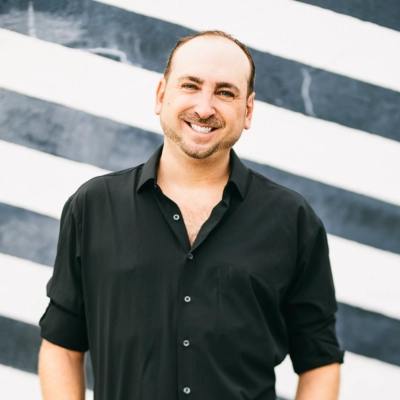16 Social Media Strategies that Drive Website Traffic
Discover the power of strategic social media marketing to boost your website traffic. This comprehensive guide unveils proven tactics across multiple platforms, from Instagram and Twitter to LinkedIn and TikTok. Drawing on insights from industry experts, these strategies offer practical solutions for businesses of all sizes to enhance their online presence and drive meaningful engagement.
- Leverage Instagram for Eco-Friendly Product Launch
- Tailor Content to Each Social Platform
- Use Twitter for Emotional Pet Adoption Stories
- Create Native TikTok Content for Traffic Boost
- Implement Value-First Content Funnel on LinkedIn
- Offer Actionable Tips on Pinterest for Entrepreneurs
- Build Trust Through Authentic Instagram Storytelling
- Share Practical Solutions via Personal LinkedIn Profiles
- Teach Real Solutions in Human-Centric LinkedIn Posts
- Solve Problems with Insight-Driven LinkedIn Content
- Align Social Strategy with Website User Experience
- Showcase Eco-Friendly Products Through Instagram Stories
- Time Twitter Posts with Relevant News Cycles
- Engage Influencers and Their Followers on Twitter
- Drive Traffic with Pinterest Visual Transformations
- Boost Website Visits Through Instagram Content Strategy
Leverage Instagram for Eco-Friendly Product Launch
One time, I really hit the mark with a social media campaign that significantly boosted traffic to our website. We used Instagram to capture a younger demographic, leveraging trendy and vibrant visuals that showcased our new line of eco-friendly products. What made our content stand out was the real-life testimonials and engaging before-and-after scenarios demonstrating product benefits. The posts were designed with compelling calls-to-action, like exclusive discounts for followers who visited our website, sparking considerable online activity and interactions.
The campaign was carefully timed to coincide with Earth Day, which really played to our advantage, as it resonated with our product's eco-conscious theme. The spike in website traffic not only increased sales but also expanded our mailing list and enhanced overall brand recognition. The success of this campaign underscored the importance of aligning our content with broader social discussions and events to stay relevant and appealing to our target audience. It showed how powerful matching content with the right context can be in driving digital traffic and engaging a community.

Tailor Content to Each Social Platform
Using platform-specific positioning, we significantly increased website traffic from our social media handles. Rather than repeating the same content on every social media platform, we wrote original messages according to each community's desired content.
We would never post the same content or message on every social media handle. For example, on LinkedIn, we offered a brief case study with metrics and a clear CTA; on Instagram, we found success with visuals and carousel storytelling; and on X, we embraced short curiosity hooks. That attention to format and how people behave in the audience, in turn, helped us engage the audience to the maximum.
When we tried this approach with a campaign last year for a home services client, we saw a huge increase in their website traffic within two weeks. Their bounce rate also dropped by 18%, showing that the users clicking through were of higher quality.
The takeaway here is to understand how people interact with content on each platform. A clean graphic and stat looks great on LinkedIn, but on Instagram, it's the behind-the-scenes reel or client result carousel that moves the needle. Going platform-native with messaging isn't more work than the alternative; it's the difference between scrolling and clicking.

Use Twitter for Emotional Pet Adoption Stories
One of our better-performing social media campaigns was centered around a series of snippets on #AdoptDontShop, where we posted stories of adoptable dogs and cats. What truly resonated with the audience was the authenticity and emotional arc of the stories, as people love transformations, especially when they involve animals finding love and safety.
I used X (formerly Twitter) with strategic hashtags like #AdoptDontShop and geo-tagged the location to enhance local visibility. Within 48 hours, the post drove over 5,000 visits to the blog and led to a spike in newsletter sign-ups. The key was storytelling with purpose, backed by platform-specific optimization.
But more than any other KPI, what we valued the most was how it led to the adoption of many of these puppies and kittens into the safety of welcoming homes.

Create Native TikTok Content for Traffic Boost
We ran a video series on TikTok featuring product unboxings and short demos, each tailored for different creators in our network. The content felt native—low production, fast pacing, and a human voice. One video for a skincare tool hit over 500,000 views in three days. The link-in-bio traffic spiked, and the brand saw a 60% lift in direct site visits that week.
What worked was timing and format. We used trending audio, added quick tips in captions, and kept videos under 30 seconds. The call to action was subtle—usually a "link in profile" or a pinned comment. People want to feel like they discovered something on their own. That style fits TikTok perfectly, and it's been our most consistent driver of traffic from social platforms.

Implement Value-First Content Funnel on LinkedIn
We used a VALUE-FIRST CONTENT FUNNEL STRATEGY to drive a sharp increase in website traffic from our social media channels. For one campaign, we developed attention-grabbing Reels and carousel posts on LinkedIn that lasted just a few seconds each and were designed to catch the eye within the first three seconds. We then concentrated on client pain points and quick wins, matching these with direct CTAs that drove users to click the link in the bio or swipe up to read more. Timing was absolutely important — we made sure we were posting during optimal engagement windows, which in our case, were usually between 9-11 a.m. and 6-8 p.m., based on our audience data.
This tactic helped drive around a 45% week-over-week increase in site traffic and nearly a two-fold increase in engagement rates over four weeks. The trick was not only frequency but RELEVANCE - each post offered something of value, from a quick tip to a visual before-and-after to an appealing client stat. We also experimented with pinned comments and story highlights to create a mini funnel right within our profiles so that users never left the platform without at least taking the next step in our journey without friction. Consistency, clarity, and value at the top of the feed — I'd say that's what got people clicking.

Offer Actionable Tips on Pinterest for Entrepreneurs
One time I successfully used social media to drive significant traffic to my website was during a major content push for FemFounder when I launched a series of "bite-sized business tips" on Pinterest. I focused on creating highly visual, value-packed pins that linked directly to longer blog posts and free resources tailored for female entrepreneurs—topics like "How to Price Your Services with Confidence" and "10 Ways to Get Featured in the Media Without a Publicist."
What resonated most with my audience was the specificity and immediate usefulness of the content. Instead of vague advice, every pin offered a clear promise (like a checklist or a mini-framework) that solved a small but real problem. Pinterest, in particular, worked incredibly well because my audience was already in "research and action" mode when browsing, so they were more likely to click through to my site, download resources, and stay engaged with my brand. It taught me that traffic naturally follows when you meet people exactly where they are with clear, actionable value.

Build Trust Through Authentic Instagram Storytelling
One of the most successful social campaigns I've run started with a simple shift: stop marketing, start storytelling. I was building a brand in a space that was crowded and competitive, and instead of trying to shout louder, I focused on showing up differently. We leaned into Instagram, not for aesthetics, but for its ability to connect—directly, authentically, and fast.
The breakthrough came from a post where I broke down the story behind one of our most misunderstood products. Instead of leading with features or price, I talked about the real-world problem it solved, how we found it, and why we believed in it. It was informal, unpolished, and personal. It wasn't optimized for SEO—it was optimized for humans.
The result wasn't just a traffic lift—it was real engagement. Conversations. Shares. People tagging their friends. It reminded me that audiences don't want brands to be louder; they want them to be real. That single post didn't just drive interest—it deepened trust. And that trust converted far better than any polished campaign ever did.
Since then, I've helped multiple early-stage and scaling teams build growth systems rooted in the same principle: content that's useful, human, and strategically distributed. Social platforms change, but attention is still earned the same way—by showing up with something that actually matters to the people you're trying to reach.
In the end, what worked wasn't a platform hack or perfect creative. It was honesty, relevance, and timing. That's the part marketers sometimes overthink—but it's also where the magic happens.
Share Practical Solutions via Personal LinkedIn Profiles
We used LinkedIn to share a blog post that tackled a very specific, recurring challenge our clients kept bringing up. It wasn't sales-driven; it was more like a checklist, short and practical. Instead of posting it from the company page, we shared it through a few personal profiles with a quick caption calling out the pain point. We also tagged a couple of people we had conversations with earlier on this topic.
That small shift made a big difference. It felt real, not like a campaign. The post picked up traction quickly; people commented and shared it, and within 48 hours, we saw a big spike in traffic to our site.
The real win wasn't the platform. It was specific, conversational, and useful. We didn't try to impress anyone. We just tried to help, and that worked.

Teach Real Solutions in Human-Centric LinkedIn Posts
One of my best traffic spikes came from a LinkedIn post where I broke down a simple marketing strategy in a mini-story format—no jargon, no sales pitch, just real talk about a common problem and how we fixed it. I linked to a deeper blog post at the end for anyone who wanted the full playbook. Because it felt personal and useful, not spammy, it took off—tons of comments, shares, and a serious surge in site clicks that week. The lesson? Teach something real, talk like a human, and only link out once people are already nodding along.

Solve Problems with Insight-Driven LinkedIn Content
What I really think is the best traffic from social media does not come from promotions, it comes from perspective. One time that stands out was when I posted a LinkedIn breakdown titled Why Most Startup Websites Fail to Convert. Instead of linking straight to the blog, I shared a mini case study with before-and-after screenshots, a few sharp takeaways, and ended with, "Full teardown in comments."
That post hit over 80,000 impressions, brought in 2,000+ clicks to the blog, and converted four leads into paying clients—all from organic traffic. The content worked because it did not sell, it solved. It gave context before asking for a click.
The platform was LinkedIn, the format was insight-driven storytelling, and the takeaway was simple. When your content mirrors what your audience is already frustrated with, traffic is just a side effect. Relevance always beats reach.

Align Social Strategy with Website User Experience
We have recently been working on delivering a cohesive user experience by heavily integrating our social media strategy with our website, particularly around the release of our new AI-driven analytics tool. Through LinkedIn and X, we showcased tangible results—like how our solution reduced data processing time for one of our clients by 40%. We accompanied these posts with a time-sensitive demo offer and used video snippets, carousel posts, and live Q&As to pique interest. Since each post would seamlessly lead to a bespoke landing page with the same messaging and visuals, we saved ourselves any and all friction from click to conversion.
A month after the campaign launched, social traffic surged significantly, with LinkedIn accounting for almost half of the increase. Even more impressive: bounce rates also decreased by 22%, and demo sign-ups tripled! This absolutely highlighted the need to ensure content, timing, and the user experience were aligned with other delivery channels. For the rest of you trying to increase conversions on your end, I'd say anchor EVERY ASPECT of your social media to genuine performance indicators and make every touchpoint seem like a natural, helpful act in the customer journey.

Showcase Eco-Friendly Products Through Instagram Stories
I once worked on a project where we successfully used Instagram to drive significant traffic to our website. Our client was introducing a new line of environmentally friendly products, and we needed to build some momentum leading up to the release.
We knew we wanted to take advantage of Instagram's highly visual platform, so we made a list of beautiful images and short videos that could highlight products in action and in lifestyle environments. We matched these images with strong, environmentally friendly messaging about the products and powerful calls to action.
The content that really engaged our audience was a series of behind-the-scenes videos of the production process, showing us the environmental cost of using eco-friendly materials. We utilized Instagram Stories to do a live Q&A session for followers to be able to ask the brand questions.
This campaign built both brand awareness and website visits, which were followed by large numbers of conversions during launch. The secret was to create entertaining content that our target audience would want to share.

Time Twitter Posts with Relevant News Cycles
A pivotal moment for us came when we posted a blog titled "Does Insurance Cover Lyme Disease Treatment?" on X (formerly Twitter), timed with a major news cycle around Lyme awareness. The tweet linked to our article and included a statistics-laden thread. Because we already ranked on page one for the keyword, the surge in shares drove both direct and indirect traffic—boosting us past competitors. That synergy between organic search and timely social content helped us double our traffic in a 72-hour span.

Engage Influencers and Their Followers on Twitter
There was a time I drove over 4,175+ page views to my website in a single day using X (formerly Twitter).
As for the content, there wasn't a specific one because many of the users landed on my homepage, so they checked out different pages on my site, including my blog posts.
The strategy is simple: I find an influencer blogger in my niche, then:
1. Read their recent blog post
2. Leave thoughtful/valuable content
3. Tweet it
When you tweet a post from a blog, there's always a "via @username" attached to that tweet, which mentions the blog owner.
So when you tweet his or her article, he or she gets notified. This gives them more reason to appreciate you by either:
- Tweeting your post to their huge following
- Retweeting your articles
- Mentioning you in their next post
You don't have to stop with this one influencer; they get loads of comments. Now you need to click through each of those comments and also repeat steps 1 and 2.
By doing this, you get to meet this influencer's readers and build relationships through reading their posts, commenting, and sharing. Many, in turn, would do the same, and that means more traffic for you, more relationships with them and their readers, more brand mentions, more audience, and more connections.
When you leave comments on each of these blogs, you not only get traffic and the benefits I mentioned above, but you also get targeted followers to your blog as well.

Drive Traffic with Pinterest Visual Transformations
One time we successfully used social media to drive significant traffic to our website was during a campaign for a home decor client. We focused primarily on Pinterest, where we implemented what we call 'Content Ecosystem Mapping' to identify the most engaging content types for their audience.
At SocialSellinator, we learned that Pinterest users are particularly drawn to visually appealing, inspirational content. We created a series of visually stunning pins featuring before-and-after room transformations, along with tips on how to achieve similar looks. This strategy resulted in a 40+% increase in website traffic within just 60 days.
While Instagram posts generated high engagement, it was the Pinterest content that drove 3x more qualified traffic to the site. By reallocating resources to focus on these inspirational room designs, we not only increased traffic but also saw around a 20+% boost in time-on-site from visitors coming from social media. The key takeaway was understanding the unique strengths of each platform and tailoring our content to meet the audience's preferences effectively.

Boost Website Visits Through Instagram Content Strategy
There was a time when I was really struggling to get people to visit my website. I had all this great content, but it felt like it was just sitting there, unnoticed. That's when I decided to give Instagram a shot. I started posting snippets of my blog posts, making sure they were visually appealing and had catchy captions. I used relevant hashtags to reach a broader audience and encouraged my followers to check out the full articles on my site. I also started using Instagram Stories to give behind-the-scenes peeks and direct links to my latest posts.
The results were pretty amazing. Not only did my website traffic increase, but I also noticed more engagement from my audience. They were commenting, sharing, and even sending me messages about how much they enjoyed the content. It felt like I was finally connecting with people who appreciated what I had to offer.
Looking back, I think the key was being consistent and authentic. I didn't try to be someone I wasn't; I just shared what I was passionate about, and people responded to that. It was a game-changer for me.



